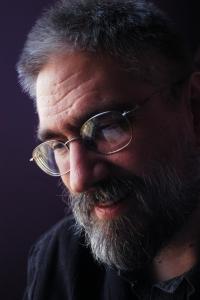David and the Phoenix
David and The Phoenix
By Edward Ormondroyd
Columbus: Weekly Reader Children's Book Club, 1958
Review by Carl McColman
 This gentle masterpiece of children's literature first appeared in the late 1950s, bringing a dimension of magic and wonder to young baby boomers growing up in a society dizzy with consumerism, the space race, and post-WWII arrogance. Recently reprinted in both hardback and paperback editions, this book is now available for an entire new generation of budding visionaries.
This gentle masterpiece of children's literature first appeared in the late 1950s, bringing a dimension of magic and wonder to young baby boomers growing up in a society dizzy with consumerism, the space race, and post-WWII arrogance. Recently reprinted in both hardback and paperback editions, this book is now available for an entire new generation of budding visionaries. The 1998 movie Toy Story 2 looks back on the fifties as a time when science fiction triumphed over cowboys as the dominant mythology for American youth. But Ormondroyd's David and the Phoenix, a genuine relic from that era, hearkens back to an even grander myth, or set of myths. Peopled with Banshees and Leprechauns, Griffins and Fauns, Sea Serpents and of course the magnificent Phoenix itself, this story cracks wide open the rich treasure-trove of world mythology and makes it fun, appealing, and shimmeringly real for today's post-modern youth.
Like Harry Potter's train to the magic land of Hogwart's, David and the Phoenix uses the concept of journeying to transport its young protagonist to the enchantments of the other world. On a beautiful summer day, David climbs the mountain behind his new home to discover the last secret refuge of a legendary bird. Stumbling upon the Phoenix quite by accident, David encounters a being with a gloriously imperfect character: learned but a bit pompous, potentially fierce but often comical, contemplative and meditative yet with a genuinely warm heart. When the boy and the bird strike up an unexpected friendship, the mythic creature decides that David deserves a "practical" education, unlike what he is receiving in school. Although the Phoenix's notions of practicality may seem a bit eccentric ("How do you tell a true Unicorn from a false one? What is the first rule of defense when attacked by a Chimera?"), this overriding theme of their friendship also serves as the moral of the story: don't let the encroaching claims of "Science" and "Modern Life" get in the way of a real education, which is based in wonder, imagination, and sometimes just lollygagging around on a sunny day. Long before movies like E.T. or Splash explored the conflict between empiricism and imagination, David and the Phoenix made an articulate case for putting science in its rightful place as only one aspect of a truly educated life.
The tension between science and myth is heightened by the Phoenix's bête noir: an over-eager scientist who is so obsessed with hunting down the bird that he would even kill it. Some of the novel's most brilliant humor involves the lengths that David and the Phoenix go to foil the scientist and dissuade him from his quest.
I properly first discovered David and the Phoenix as a boy, and today I cherish its message of the primacy of myth and wonder. Going back to re-read it in 2001, I am struck by how masculine a book it is (although the Phoenix's gender is never disclosed); I also wince at its portrayal of witches as either petulant or comically threatening (one old Irish hag keeps trying to get the Phoenix to sell David to her. "Ah, the wee darling, the plump little mannikin. What a broth he'd make, to be sure"). But I can forgive these flaws as symptoms of the book's age, especially given the overall feeling of magic and enchantment that fills this too-brief story.
The resolution of the conflict between the Phoenix and the scientist brings themes of loss and renewal together in a heartbreaking climax. At least the hostile scientist doesn't win, but he isn't defeated, either. We readers are left to carry on the battle, of providing the Phoenix and his kind safe harbor and refuge in a world where "getting and spending" and the "obsessive interest" of arrogant science have threatened the eternal beauty and truth of the mythic world.
It's a challenge I'm willing to take.


0 Comments:
Post a Comment
<< Home